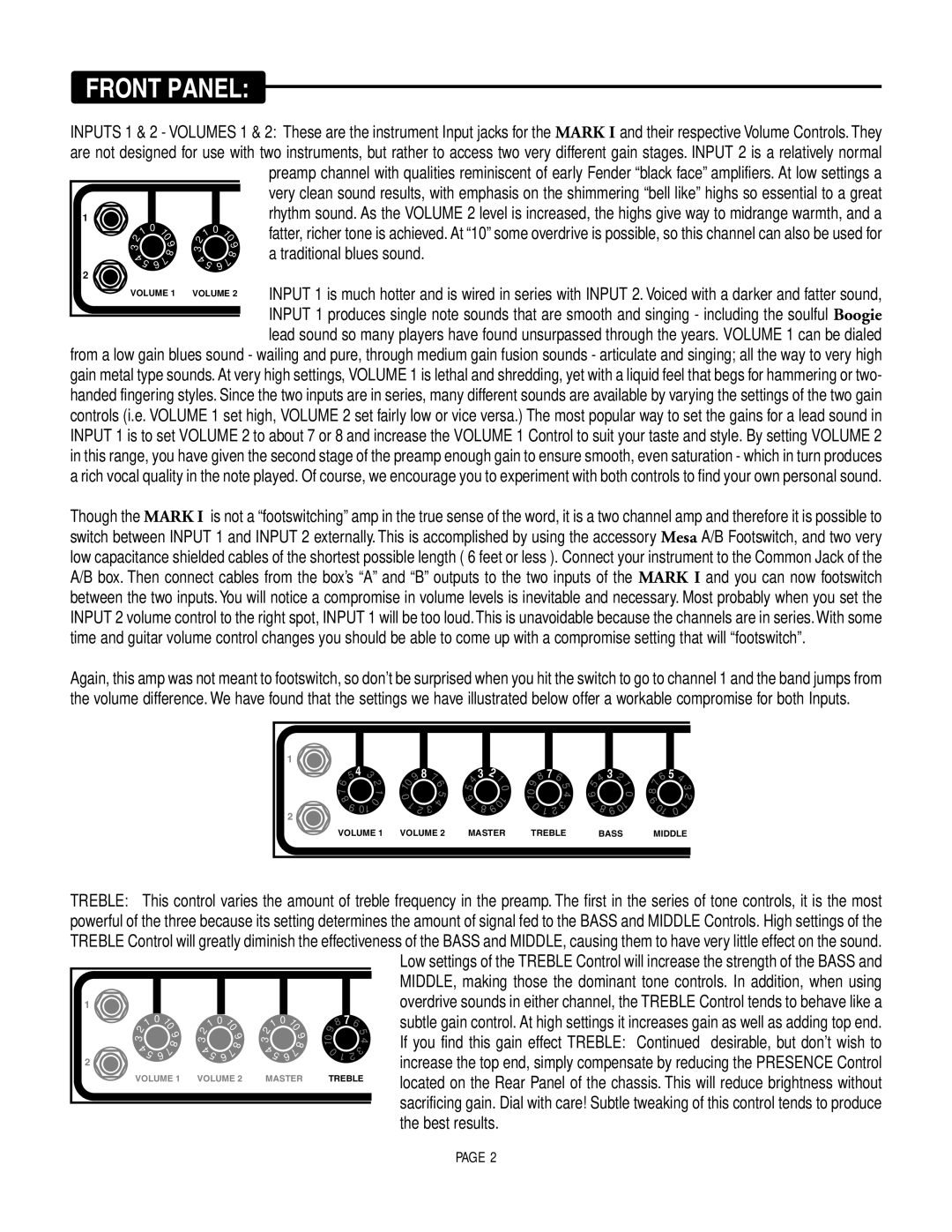MARK 1 specifications
The Mesa/Boogie MARK 1 is an iconic guitar amplifier that has significantly influenced the world of music since its introduction in the late 1960s. Designed by Randall Smith, the MARK 1 was one of the earliest examples of a high-gain, boutique-style amplifier, aimed at offering guitarists a versatile tool for achieving rich tones across various genres.One of the standout features of the MARK 1 is its innovative preamp design, which utilizes multiple gain stages to produce a wide range of tonal options. This allows players to achieve everything from sparkling clean sounds to aggressive, saturated overdrive. The two-channel configuration—clean and lead—enables users to switch effortlessly between different sounds, making it a favorite among performers looking for adaptability in their rig.
The MARK 1 is also equipped with a powerful EQ section, featuring a 5-band graphic equalizer that grants further control over tonal shaping. This level of customization is rare in amplifiers of its time, allowing musicians to tailor their sound to perfection, whether in the studio or on stage. The “Fat” switch adds additional low-end response and gain, enhancing the amp's overall character and making it suitable for heavier genres.
Another hallmark of the MARK 1 is its compact design, which was revolutionary at the time. Weighing significantly less than traditional tube amplifiers, the MARK 1 was constructed with portability in mind, making it easy for gigging musicians to transport. This combination of power and portability made the MARK 1 a popular choice for artists across various genres, from rock to blues and jazz.
The MARK 1, like many of Mesa/Boogie’s offerings, is built with high-quality components, ensuring durability and reliability. The use of premium tubes in the power section contributes to its dynamic response and harmonic richness, vital for expressive playing.
Overall, the Mesa/Boogie MARK 1 is more than just an amplifier; it's a landmark in guitar amplification technology. With its versatility, compactness, and powerful tone-shaping capabilities, the MARK 1 paved the way for future amplifiers and continues to be revered by musicians around the world for its outstanding performance and timeless sound. Whether performing live or recording in the studio, the MARK 1 remains a trusted companion for guitarists seeking to explore the full spectrum of their musical expression.

